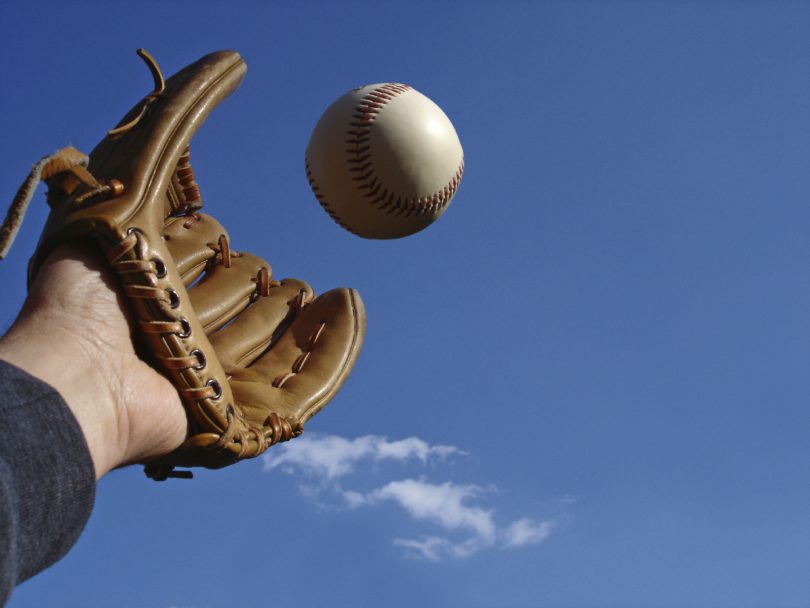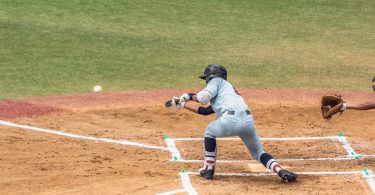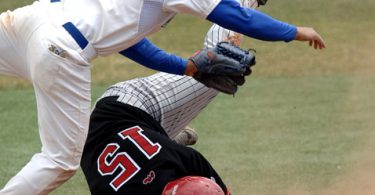By Ethan Guevin
The Situation:
There is no one on and two outs in the 6th inning. There has been a lull in the action since the 2nd inning when both teams scored 2 runs apiece. Both teams seem like they are just going through the motions a little bit and the game is still tied at 2.
The Play:
On a 2-2 count, the hitter swings at a curveball and pops it up on the infield. The pop-up is about medium height and is coming down about 5 feet behind the mound in the direction of the 6-hole. As the ball goes up, the pitcher gets out of the way. The third baseman and the shortstop converge on the ball. The play is easier for the 3rd baseman, but he sees that the shortstop is in the vicinity and pulls up, knowing he has pop-up priority. As the shortstop approaches the ball, he recognizes how easy a play it would be for the 3rd baseman and he too starts to pull up, thinking he will surely catch the ball.
The Outcome:
Even though the ball could easily have been caught by the pitcher, 3rd baseman, and shortstop, it falls between the three of them for a hit and the batter, running hard out of the box ends up at second in scoring position. The next hitter knocks him in with a bloop single and the offense takes the lead.
What Went Wrong:
We see this situation happen at all levels of baseball. The way to avoid making this mistake is simple. Always want the ball and always assume that you will have to make the play. Then, follow these simple rules.
- As soon as the ball goes up, assume that it is your play until you are called off by someone with higher priority or the play dictates that it would be impossible for you to make the play (for example: if you are a SS and there is a deep fly ball to RF). In this case, you should have some other responsibility or place you need to be during the play.
- Know your team’s pop-up priority system, but more importantly, understand the way it works.
Pop-up Priority System
The pop-up priority system is in place to help fielders in situations where two or more players are able to make a play on the ball with similar chances of making the catch. For most teams, the system is as follows:
- Outfielders have priority over infielders
- Centerfielder has priority over the corner outfielders
- Shortstop has priority over all infielders
- Second baseman has priority over first baseman
- All infielders have priority over the pitcher and catcher
- Catcher has priority over the pitcher
However, having an understanding of the priority system is not enough. For example, in our situation above, the 3rd baseman assumes that because the SS has priority over him, he will make the play. In reality, the play is more difficult for the SS, so the 3rd baseman should call the ball early and make the easy play.
Regardless of the priority system, if it is an easy play for you to catch the ball, call it as soon as you know you can make the play. This will help to avoid confusion when multiple players have a play on the ball. If two players call for the ball, the pop-up priority system is there to determine who gets the play on the ball.
Rules aside, the bottom line remains that you should try to catch everything you can and assume the play is yours until you know the ball will be caught by someone else. By doing this, you will ensure that your team doesn’t have multiple players letting a ball fall between them.







